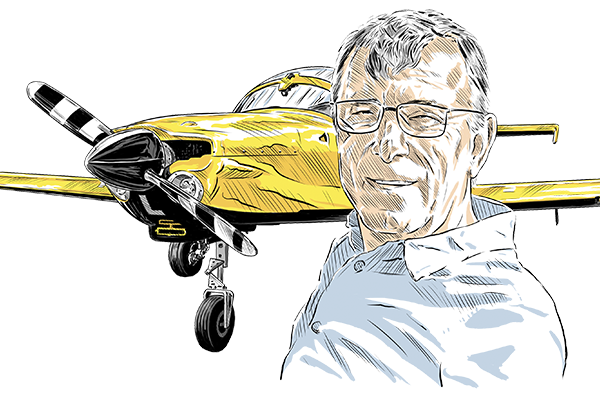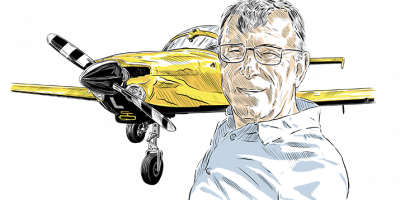Obtaining a PPL is usually lots of hard work, as well as great dollops of fun, and with an enduring sense of achievement. And that usually applies in equal measure to the instructor and to their student.
But what if the student thinks he ‘knows best’? From an instructor’s perspective, the fun tends to go out of the experience, as time is spent grappling with how to address the issue – and sleepless nights can follow.
For the novice pilot it can be downright dangerous, as this recent accident illustrates.
Accident details
The pilot, a 44-year-old owner of a Cessna C150 Aerobat registration G-CIIR, and his passenger flew to Netherthorpe without the Prior Permission Required (PPR), to meet a locally based owner of a Maule M7, prior to both aircraft setting off for Troutbeck Airfield.
The M7 landed at Troutbeck on the 450m long Runway 36 with a 10kt headwind, well before G-CIIR arrived.
As the runway was ‘sludgy’, the M7 pilot tried to call the pilot of G-CIIR on his mobile phone to advise him of the runway state. However, he could not ‘positively remember’ if he spoke to the pilot. He subsequently met the airfield’s owner outside the airfield’s hangar.
“The airfield owner was annoyed with them and repeated that a C150 should not have landed there in the conditions”
About 10 to 15 minutes later, when G-CIIR came into view, the airfield owner realised it was a C150, an aircraft that he was not content to operate into Troutbeck. He ran into the hangar to get his hand-held transceiver and made repeated calls on ‘SafetyCom’ frequency, 135.480 MHz, to try and ascertain what the pilot’s intentions were, but there was no response. G-CIIR then made an uneventful descent, approach and landing, and taxied in and parked about 80m from the hangar.
Neither pilot had obtained PPR directly from the airfield owner to land at Troutbeck. However, the M7 pilot believed he had PPR by proxy from another pilot, who had phoned the airfield owner that morning asking for PPR, saying that an M7 pilot was planning on visiting too.
The airfield owner was ‘very cross’ with the M7 pilot, as he had made no mention that a C150 was also visiting, adding that it was ‘not appropriate for one to land here in the conditions’.
The M7 pilot then advised G-CIIR’s pilot that the airfield owner was dissatisfied that PPR had not been requested, and that the runway’s condition was not suitable for operating a C150.
The M7 pilot then said that he (the M7 pilot) should probably take the passenger back to Gamston in his M7, if not all of them. The pilot replied ‘no, no we’ll get out easily’.
At the hangar the pilot and his passenger met the airfield owner who was annoyed with them and repeated that a C150 should not have landed there in the conditions. The pilot was apologetic, saying he thought someone had phoned on his behalf to ask for PPR.
Given the airfield owner’s concerns, he instructed G-CIIR’s pilot to depart solo, with his passenger departing in the M7. He added that the pilot was to use the full length of Runway 36 to ensure that all the Takeoff Distance Available (TODA) was used. This would entail a backtrack of Runway 36 from the intersection of Runway 04 before starting the take-off roll. The pilot agreed.
The airfield owner then had to leave, but before doing so he told the M7 pilot to ensure that he took the passenger back to Gamston and that G-CIIR used the full length of the runway.
Both pilots walked the runway to discuss the airfield owner’s instructions, but they did not go to the threshold of Runway 36. Due to the surface condition and the positive gradient from the threshold to the intersection with Runway 04, G-CIIR’s pilot said he would go down about halfway from the intersection to the threshold before starting the take-off roll, and the M7 pilot accepted this.
For the return to Gamston, G-CIIR’s pilot started his aircraft first. Due to the condition of the ground where he had parked he had difficulty taxying out, and was then seen to taxi along Runway 22. As he got to the intersection with Runway 36, the pilot turned right onto Runway 36 without backtracking. The engine was heard to accelerate to full power and the aircraft commenced the take-off roll. The M7 pilot said that the engine sounded normal and G-CIIR quickly became airborne.
Given the short time it took G-CIIR to taxi out and commence the take-off roll, he believed the pilot did not have time to perform his engine power checks and pre-take-off checks. Once airborne, it appeared the pilot then started a left turn during which the left wing dropped and the aircraft entered a near vertical dive from about 50ft agl, before striking the ground in an adjacent field causing fatal injuries.
The accident pilot had completed his PPL(A) Licence Skills Test (LST) some 10 weeks before the accident and, prior to the issue of his licence, had flown G-CIIR from Gamston into the M7 pilot’s private grass airstrip. The airstrip has about 330m of TORA, with trees and residential houses in the undershoot and overshoot. When the accident pilot asked his supervising instructor, via a text message, if he could fly there, the instructor assumed he was going there as a passenger with the M7 pilot and responded, ‘Go for it’. However, the pilot planned to fly himself there in G-CIIR.
Prior to departing Gamston, another instructor heard on the radio that this flight was preparing to take-off and, knowing the airstrip was not suitable for a C150, was surprised to hear this. He tried to phone the pilot to stop him from going but got no reply. He therefore took it upon himself to drive to the airstrip, a distance of about 28nm (approximately 45 minutes). The instructor arrived just before G-CIIR landed.
After the pilot had landed, the instructor chastised him and made it quite clear that he had driven over because he was completely dismayed that the pilot had opted to operate a C150 into this airstrip. The instructor told him that the airstrip was not suitable for a C150, whatever the pilot’s experience, and suggested that a more experienced pilot fly the aircraft out of the airstrip. He also made his feelings known to the M7 pilot.
However, the accident pilot subsequently flew G-CIIR out, contrary to the instructor’s advice. A few days later the instructor spoke to the pilot and reiterated his concerns to him. He discussed the performance issues and hazards of operating his aircraft into such an airstrip. He also spoke at length about the type of flying he should be doing to gain experience with his new licence, and it did not include any grass or performance limiting airfields.
The owner of Troutbeck Airfield stated the accident pilot had previously visited several months earlier in G-CIIR with the M7 pilot who flew in a Super Cub. He was on that occasion ‘astounded’ to discover in conversation that the pilot was on a student solo cross-country flight and that he would ‘most certainly not have allowed him to land’ had he known at the time.
“During some of the flights with him, the instructor noticed the student had a habit of not wearing shoulder straps”
One of the accident pilot’s instructors, who flew and supervised most of his training flights after he had purchased G-CIIR, stated that during some of the first flights he flew with him he had a habit of not wearing his shoulder straps.
From the outset the instructor asked him to put them on, which he did, albeit reluctantly. When debriefed on this, the instructor told him firmly that he would not fly with him unless he wore them.
The same instructor described the accident pilot as a ‘good solid average pilot’, although he could be ‘a bit hit and miss at times’. He was also ‘not the most consistent student’.
He described him as one of the ‘more aggressive, pushy students’ at times. He added that during some of the first few lessons they flew together these attributes gave him cause to ‘reel him in’ and he had to explain to him what was acceptable and what was not. He added he’d to be quite firm with him at times.
He authorised the earlier cross-country flight to Troutbeck as he felt his ability was up to it, his attitude had ‘turned a new leaf’ and he was progressing well through the course. Additionally, he felt the conditions were suitable on the day to go into a ‘500m strip’.





